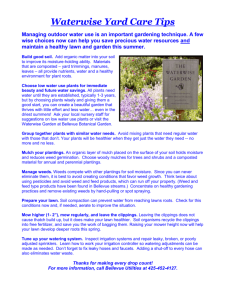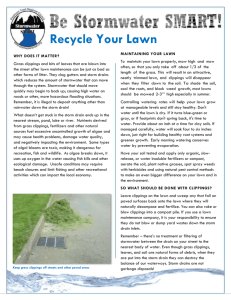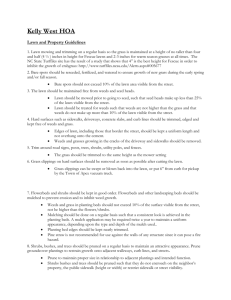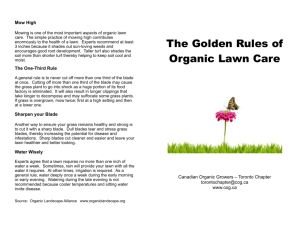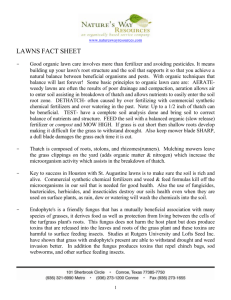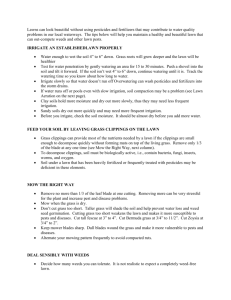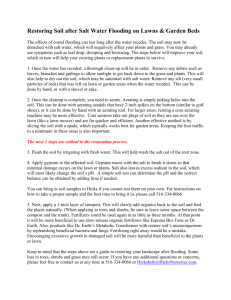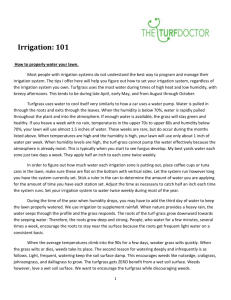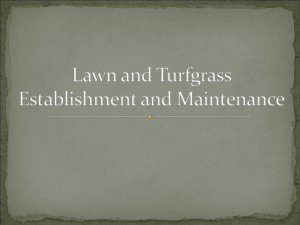Article: Natural Organic Turf Management
advertisement
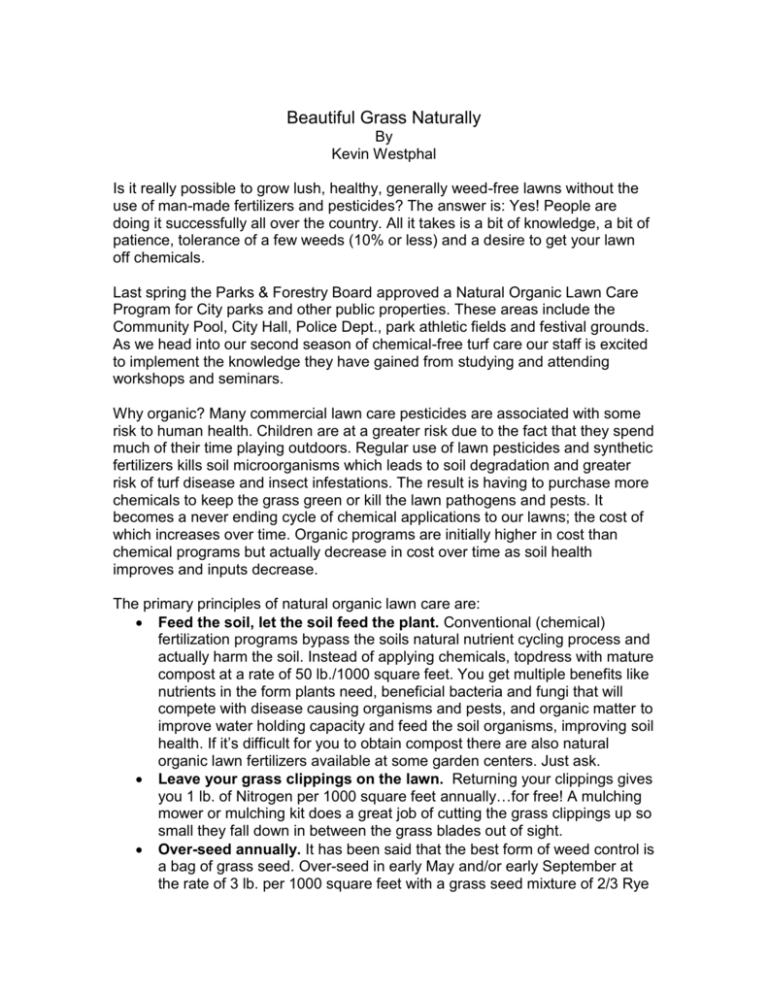
Beautiful Grass Naturally By Kevin Westphal Is it really possible to grow lush, healthy, generally weed-free lawns without the use of man-made fertilizers and pesticides? The answer is: Yes! People are doing it successfully all over the country. All it takes is a bit of knowledge, a bit of patience, tolerance of a few weeds (10% or less) and a desire to get your lawn off chemicals. Last spring the Parks & Forestry Board approved a Natural Organic Lawn Care Program for City parks and other public properties. These areas include the Community Pool, City Hall, Police Dept., park athletic fields and festival grounds. As we head into our second season of chemical-free turf care our staff is excited to implement the knowledge they have gained from studying and attending workshops and seminars. Why organic? Many commercial lawn care pesticides are associated with some risk to human health. Children are at a greater risk due to the fact that they spend much of their time playing outdoors. Regular use of lawn pesticides and synthetic fertilizers kills soil microorganisms which leads to soil degradation and greater risk of turf disease and insect infestations. The result is having to purchase more chemicals to keep the grass green or kill the lawn pathogens and pests. It becomes a never ending cycle of chemical applications to our lawns; the cost of which increases over time. Organic programs are initially higher in cost than chemical programs but actually decrease in cost over time as soil health improves and inputs decrease. The primary principles of natural organic lawn care are: Feed the soil, let the soil feed the plant. Conventional (chemical) fertilization programs bypass the soils natural nutrient cycling process and actually harm the soil. Instead of applying chemicals, topdress with mature compost at a rate of 50 lb./1000 square feet. You get multiple benefits like nutrients in the form plants need, beneficial bacteria and fungi that will compete with disease causing organisms and pests, and organic matter to improve water holding capacity and feed the soil organisms, improving soil health. If it’s difficult for you to obtain compost there are also natural organic lawn fertilizers available at some garden centers. Just ask. Leave your grass clippings on the lawn. Returning your clippings gives you 1 lb. of Nitrogen per 1000 square feet annually…for free! A mulching mower or mulching kit does a great job of cutting the grass clippings up so small they fall down in between the grass blades out of sight. Over-seed annually. It has been said that the best form of weed control is a bag of grass seed. Over-seed in early May and/or early September at the rate of 3 lb. per 1000 square feet with a grass seed mixture of 2/3 Rye & Fescue, 1/3 Bluegrass to inject youth into your lawn and compete with weed seeds. Raise your cutting height and keep your blades sharp. Cut your grass at 3 to 3.5 inches to keep the soil cool and conserve moisture; shade the soil surface to reduce weed seed germination; and increase rooting depth due to more leaf surface area for photosynthesis. Blades should be sharpened after every 8 hours of use to ensure a clean, non-tattered cut. Irrigate less often, but more deeply. Turf needs about 1 inch of water per week, so water once a week, in the early morning, for a longer time period. This promotes deeper rooting and prevents a water-logged soil. Listen to your weeds, they are telling you something. In a conventional lawn care program chemicals are applied before, during and after the onset of weeds. Yet the following year the weeds come back so we put down more chemicals. This good for the chemical companies but bad for the lawn. Weeds are messengers telling you that your soil is more favorable to grow weeds than the turfgrass you desire. Learn to know what the weeds are telling you about your lawn. For more information on the topics of improving soil health and natural lawn care we recommend the following books: 1. “Teaming with Microbes: A gardener’s Guide to the Soil Food Web” by Lowenfels and Lewis. 2. “The Organic Lawn Care Manual” by Paul Tukey. 3. “Managing Healthy Sports Fields” by Paul Sachs.
